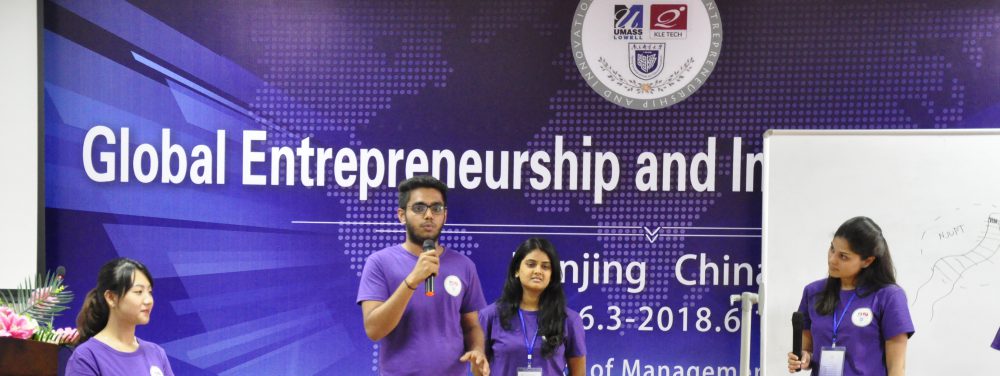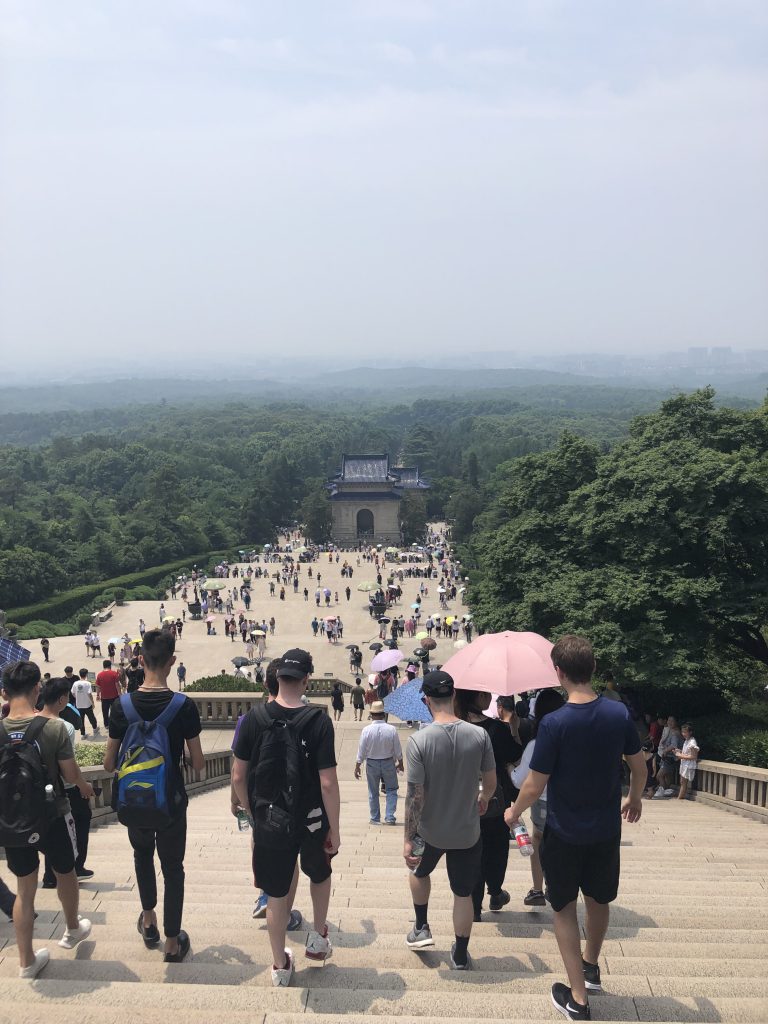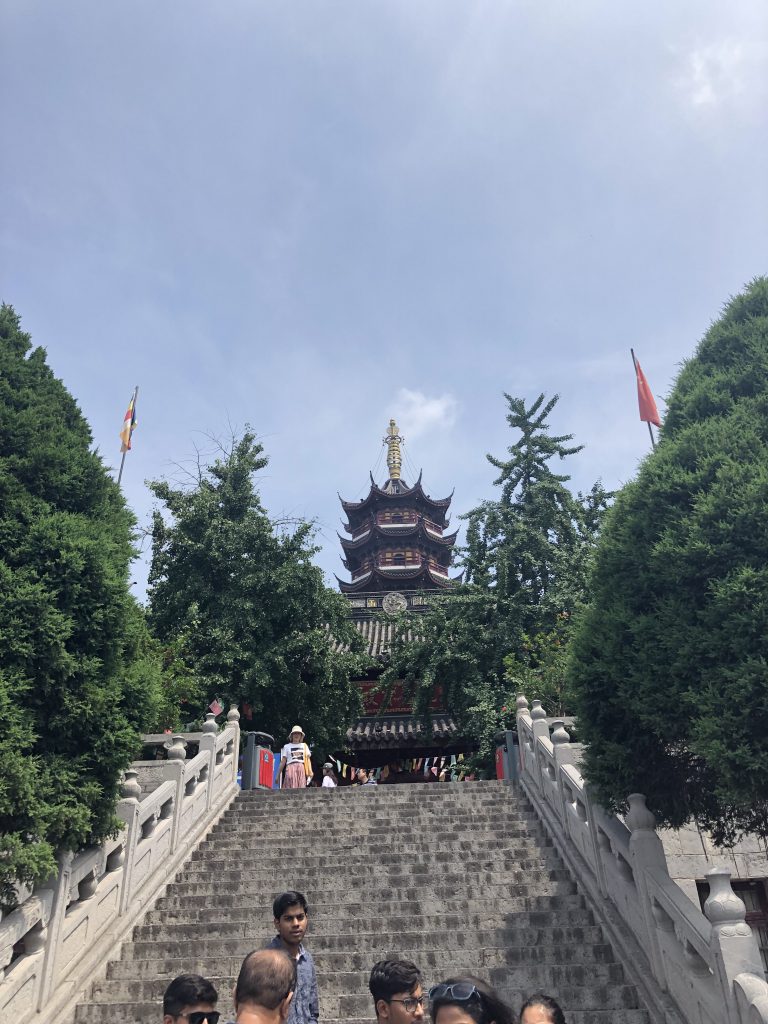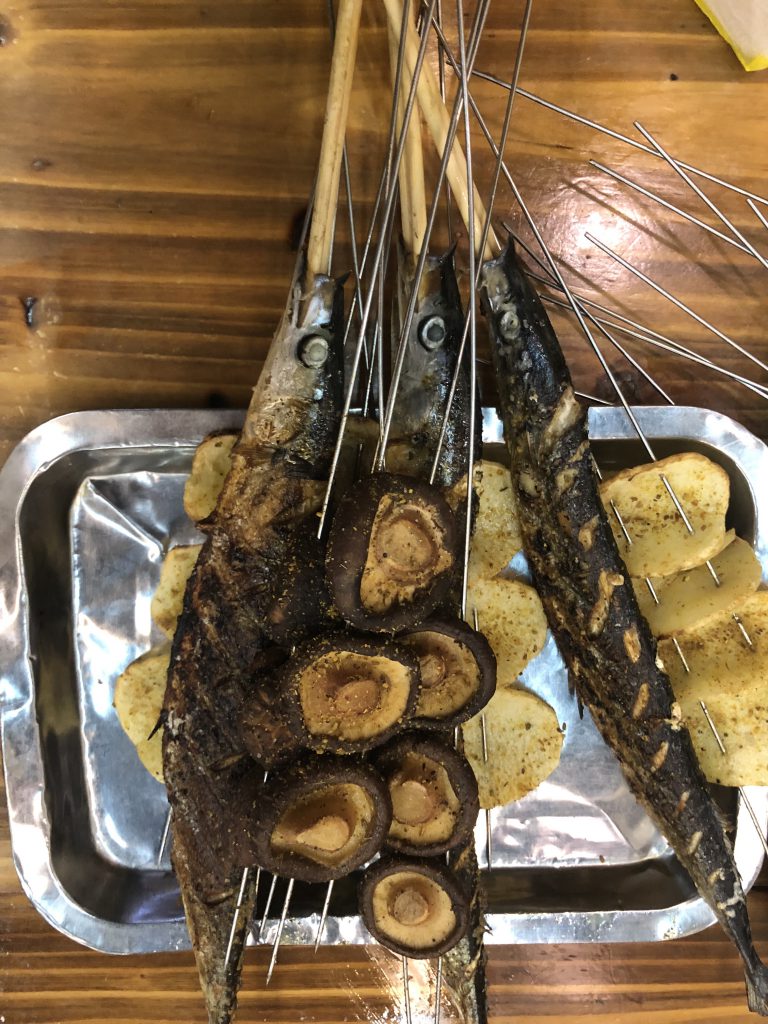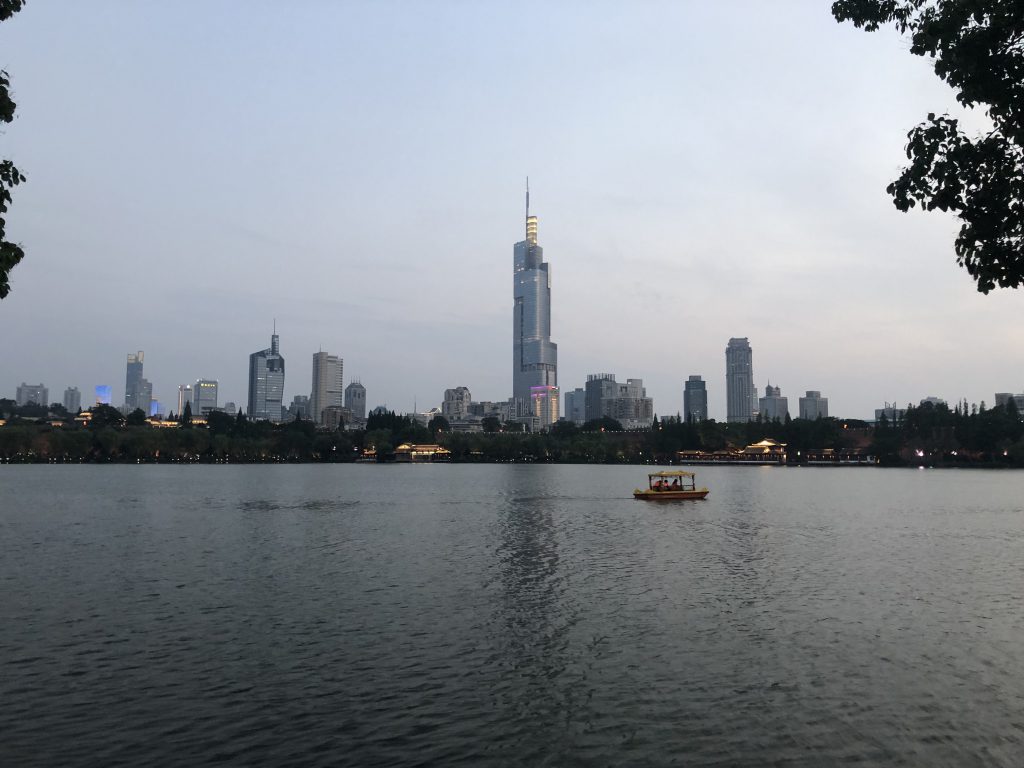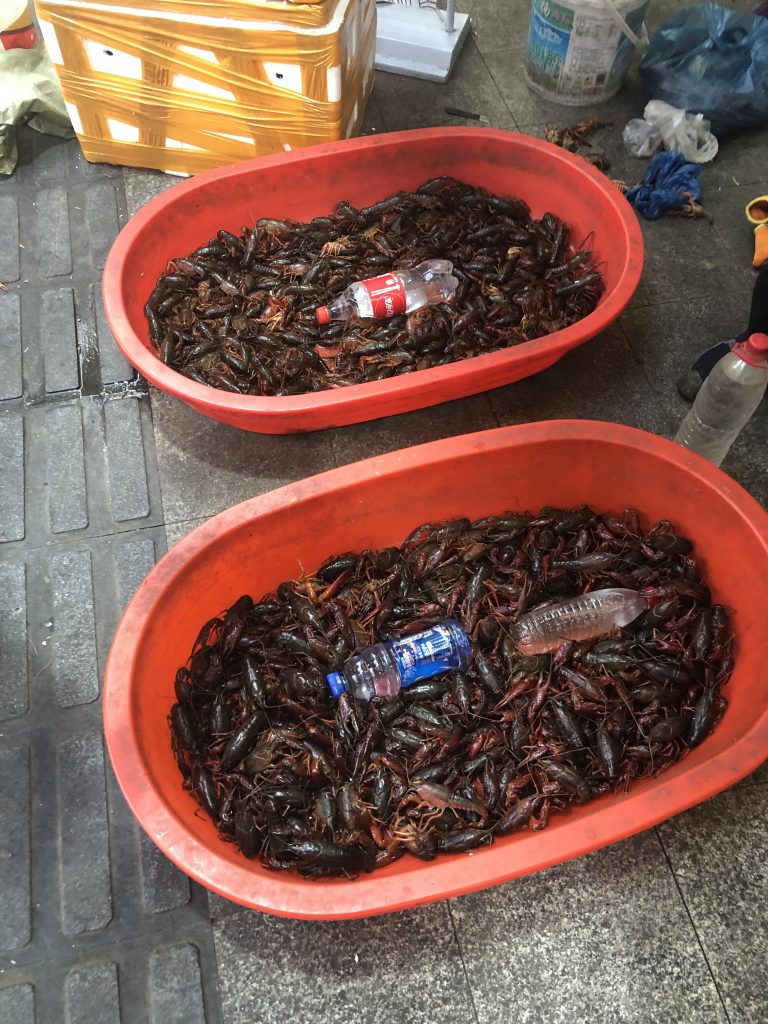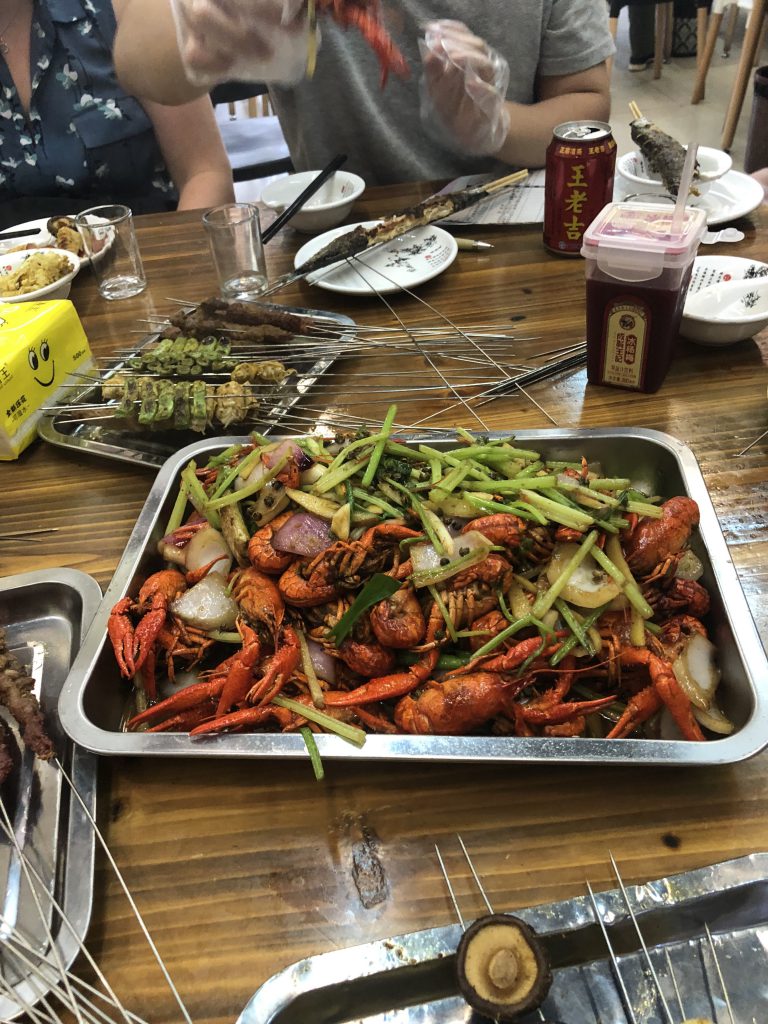After saying our goodbyes to the students in Nanjing it was time for us to head to Beijing for the final leg of our journey. We took the bullet train from Nanjing and let me just say it was probably on one of the most impressive modes of transportation I have ever taken. The distance from Nanjing to Beijing is 630 miles and a normal train would take 9 hours to get there. The bullet train got us there in three hours almost a third of the time it would take for a regular train to get there, which was absolutely incredible.
Waking up on the first morning, the weather was sunny and ninety five degrees. The itinerary included a trip to Tiananmen Square and the forbidden city. When we first arrived at Tiananmen Square I was in awe at the sheer size of it and its location within the city of Beijing. There are currently six rings that encompass the city and each ring connects all of the different parts of Beijing. Tiananmen Square is locate exactly in the center of these six rings, which puts it at the heart of the city. While walking through the square you see Chairman Maos Mausoleum and the lines of people that are about to go in to pay their respects to the man that changed the country of China. There is also a pillar in front of the Mausoleum, and the Great Hall of the People where legislation occurs. All political members across the country meet in that building. Across from Tiananmen Square is the entrance to the Forbidden City, which also plays an important role in the country’s history.
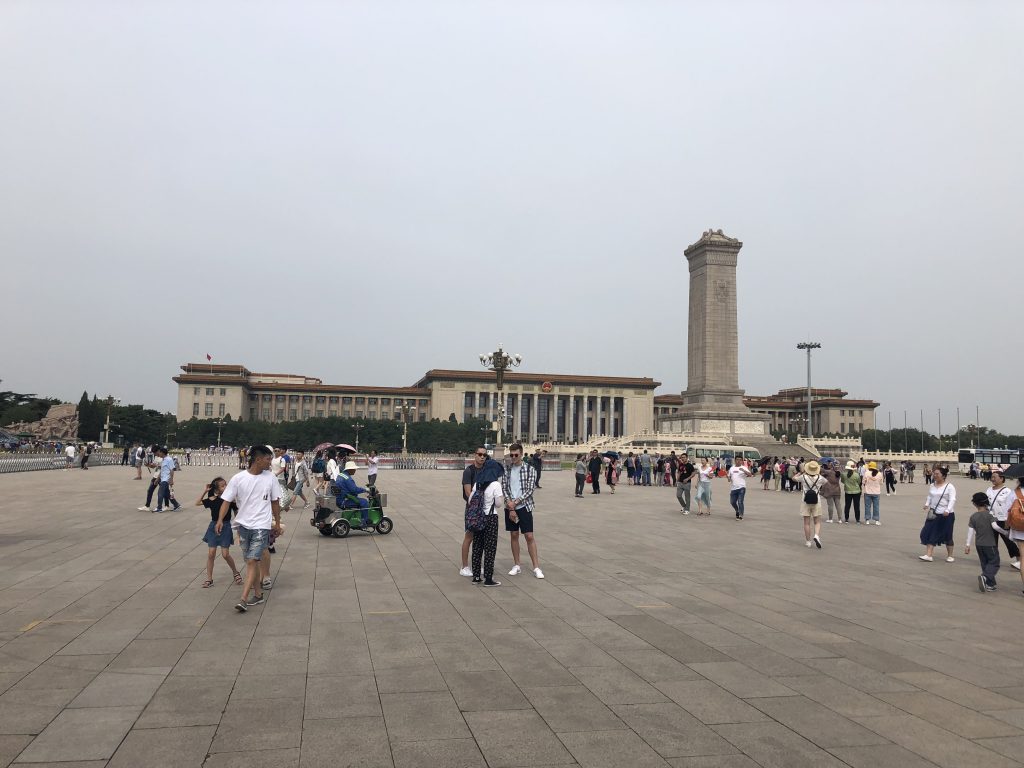
The forbidden City was the living place for the countries emperors, and it is called the forbidden city because common people were not allowed to enter. If they did enter they were immediately killed. Walking around and seeing all the architecture, the colors, and the size of the city just goes to show you the history and the architecture the Chinese have. There are different sections of the palace, which include rooms where the emperor met with officials, rooms where parties and gatherings occurred, and the living quarters, and the garden which was located at the very end of the city. Looking back at it if I was the emperor I would be so sick of walking, because it’s so big.

After the Forbidden City we got lunch and headed to a counterfeit market. In China there are many of these places that sell counterfeit goods. Many of the products look identical to the real thing, however they are not. The whole point is to negotiate prices with them, for example a shirt that I bought had a starting price of 800 Yuan, roughly 114 dollars. The final price we agreed on was 200 Yuan, which is about 28 dollars. I purchased all of my gifts from this market and ended up paying a lot less than going to a souvenir store. This was a good experience because I like to negotiate and I had a lot of fun doing it. At night six of us decided to get lost in Beijing, so we took the subway to a street with a lot of shops and found a restaurant that had superb food.
The next day was a day that I had been waiting for since the trip started, going to the Great Wall of China. At first glance you don’t really see much, however once you start climbing it and getting higher up in the mountains you really get to see how immaculate and amazing the Great Wall really is. You see it in pictures and movies, but you never get to really appreciate the construction, beauty, and the mystery the Great Wall possesses. We only had two hours to get as far as we could, so Evan Danny, Mike, Liam, and I just booked it. The climb consisted of steep drops, steep inclines, and a lot of steps. We ended up going three miles and when we finally sat down to rest it finally hit us that we were on The Great Wall of China, one of the wonders of the world. The trek back however was not as easy. Since we went downhill for about a mile we had to go back uphill, which was probably one of the most grueling things I have ever done. The climb was almost vertical, and after we got off the wall my legs were shaking due to the intensity of the trek, but it was all worth.

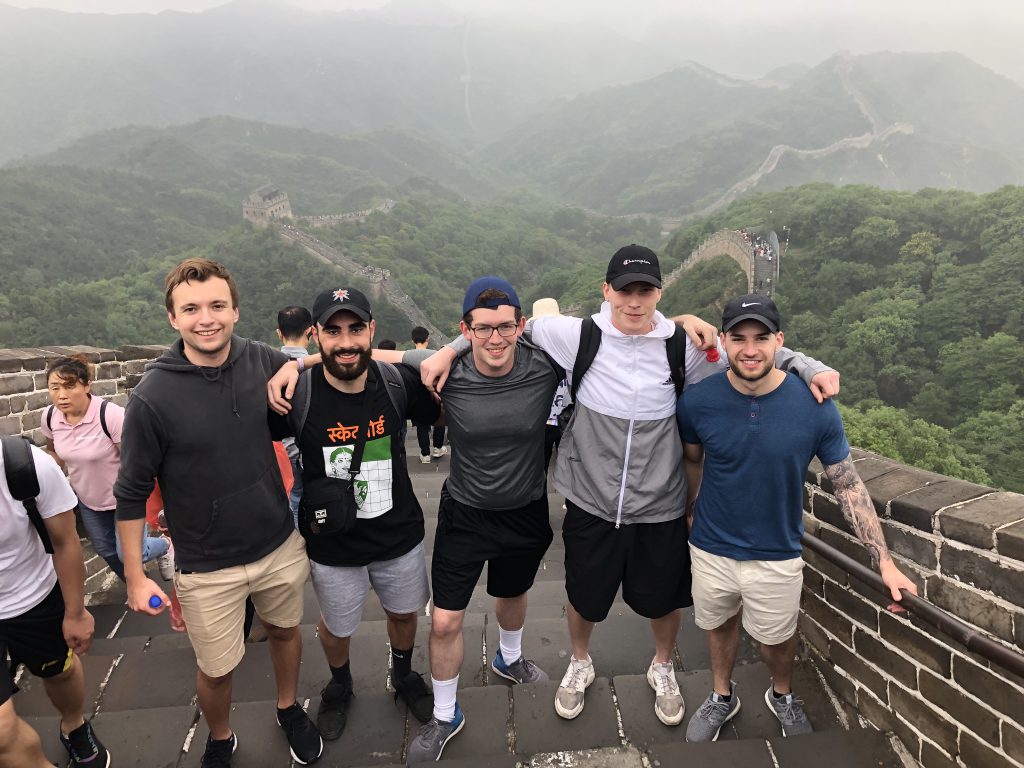
After looking back at this whole trip and realizing the situation that I put myself in, traveling to a new country, surrounding myself with people who I was unfamiliar with I can honestly say it was all worth it. This trip was probably one of the best experiences of my life and I am forever grateful that I took this opportunity to study abroad in China.
